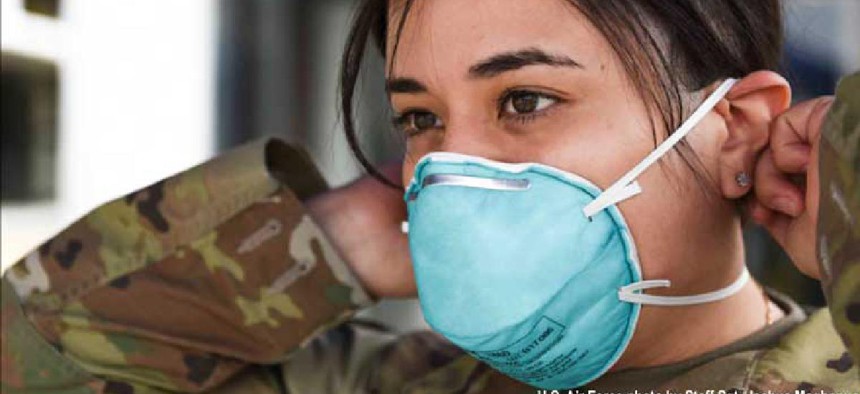Digital contact tracing key to force readiness, DOD says
The Defense Health Agency envisions personnel wearing an unobtrusive device that supports proximity logging and recording in all military environments, including those disconnected from wide-area networks, to guard against coronavirus spread.
The Defense Department is looking for a better way to conduct contact tracing. Also known as proximity logging, the Defense Health Agency wants commanders and Force Health Protection staff to be able to automatically record person-to-person exposure within defined areas like ships or training facilities and identify and notify at-risk personnel based on how close they have come to infected individuals.
The manual contract tracing currently used to identify and isolate those at risk of infection leaves commanders and health officials without a complete understanding of force readiness, officials said in an Oct. 24 solicitation. Current efforts also require significant manpower to track down contacts, and investigations are often inconclusive because those exposed must rely on their memory to identify other at-risk individuals. As a result, the incomplete tracking and isolation of infected individuals encourages the spread of diseases and impacts force readiness.
DOD envisions a solution that requires personnel to wear or carry an unobtrusive device that advertises their presence and supports proximity estimations and data recording in all military environments, including those disconnected from wide-area networks.
On the back end, the security- and privacy-compliant solution should be able to capture, analyze and visualize data. It should also be capable of scaling upwards from 20,000 users and adapting to future infectious diseases as well as chemical, biological, radiological and nuclear threat exposure.
The search for a digital contract tracking solutions began shortly after the COVID-19 outbreak began, but efforts have been hampered by individuals’ reluctance to participate in such programs, citing mistrust of government or loss of privacy. Now, the virus has become so widespread that some locations are asking infected persons to conduct contact tracing themselves.
Still, several states, including Virginia, New York and New Jersey have developed exposure notification apps that use smartphones’ Bluetooth signals to alert other app users that they’ve been in contact with an infected person. According to a recent survey by the National Association of State CIOs, 53% of respondents said their states were using mobile apps for contact tracing and exposure notification.
The Defense Health Agency is holding a pitch day Nov. 10 for innovative contact tracing solutions. More information is available here.
This article first appeared on GCN, a Defense Systems partner site.
NEXT STORY: GDIT hangs on to DEOS cloud contract




